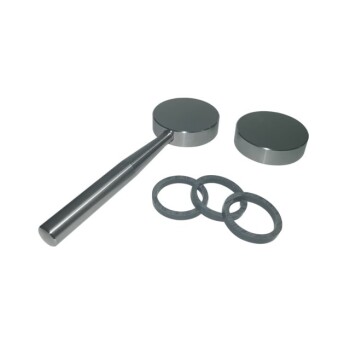X-ray Fluorescence (XRF) is a widely used analytical technique for elemental analysis, and it is categorized into two main types: Energy Dispersive XRF (ED-XRF) and Wavelength Dispersive XRF (WD-XRF). ED-XRF is simpler, faster, and can simultaneously analyze multiple elements, making it suitable for applications requiring quick results. In contrast, WD-XRF offers higher resolution and precision, making it ideal for detailed analysis, though it is more complex and expensive. Both types are available in portable (handheld) and benchtop configurations, with detectors like Silicon Drift Detectors (SDDs) and Silicon Pin Diode Detectors (PINs) influencing performance. The choice between ED-XRF and WD-XRF depends on the specific application, required resolution, and budget.
Key Points Explained:

-
Two Main Types of XRF:
-
Energy Dispersive XRF (ED-XRF):
- Mechanism: Uses a detector to measure the energy of emitted X-rays simultaneously for multiple elements.
- Resolution: Typically ranges from 150 eV to 600 eV.
- Advantages: Simpler design, faster analysis, and ability to analyze multiple elements at once.
- Applications: Ideal for quick, on-site analysis, such as in mining, environmental testing, and quality control.
-
Wavelength Dispersive XRF (WD-XRF):
- Mechanism: Uses a goniometer to measure the wavelength of emitted X-rays one element at a time.
- Resolution: Higher resolution, ranging from 5 eV to 20 eV.
- Advantages: Greater precision and accuracy, suitable for detailed analysis.
- Applications: Used in laboratories for research, material characterization, and high-precision elemental analysis.
-
Energy Dispersive XRF (ED-XRF):
-
Portable vs. Benchtop Models:
-
Portable (Handheld) XRF:
- Designed for on-site use, providing lab-quality results in the field.
- Commonly used in industries like mining, archaeology, and environmental monitoring.
- Examples include handheld XRF analyzers or portable XRF guns.
-
Benchtop XRF:
- Stationary instruments used in laboratories.
- Offers higher stability and precision compared to portable models.
- Suitable for detailed and controlled analysis.
-
Portable (Handheld) XRF:
-
Detector Types in XRF Instruments:
-
Silicon Drift Detector (SDD):
- Newer technology, more sensitive, and capable of detecting light elements (e.g., Mg, Al, Si, P, S).
- Higher counting rates, making it faster and more efficient.
- More expensive but ideal for applications requiring high sensitivity.
-
Silicon Pin Diode Detector (PIN):
- Older technology, less sensitive, and primarily detects heavier elements (above Sulfur on the periodic table).
- Slower counting rates but more cost-effective.
- Suitable for applications where sensitivity is not a critical factor.
-
Silicon Drift Detector (SDD):
-
Choosing Between ED-XRF and WD-XRF:
-
ED-XRF:
- Best for applications requiring speed, simplicity, and simultaneous multi-element analysis.
- Lower cost and easier to operate, making it accessible for field use.
-
WD-XRF:
- Preferred for high-resolution and precise elemental analysis.
- More complex and expensive, but essential for laboratory research and detailed material characterization.
-
ED-XRF:
-
Applications and Considerations:
-
ED-XRF Applications:
- Mining and geology for ore analysis.
- Environmental testing for soil and water contamination.
- Quality control in manufacturing processes.
-
WD-XRF Applications:
- Advanced material research and development.
- High-precision elemental analysis in laboratories.
- Certification and compliance testing in industries like aerospace and electronics.
-
ED-XRF Applications:
-
Future Trends in XRF Technology:
- Increasing adoption of SDD detectors due to their superior performance.
- Development of more compact and user-friendly portable XRF analyzers.
- Integration of advanced software for data analysis and interpretation.
By understanding the differences between ED-XRF and WD-XRF, as well as the role of detectors and instrument configurations, users can make informed decisions based on their specific analytical needs, budget, and application requirements.
Summary Table:
| Feature | ED-XRF | WD-XRF |
|---|---|---|
| Mechanism | Measures energy of X-rays simultaneously for multiple elements. | Measures wavelength of X-rays one element at a time. |
| Resolution | 150 eV to 600 eV | 5 eV to 20 eV |
| Advantages | Simpler, faster, and multi-element analysis. | Higher precision and accuracy for detailed analysis. |
| Applications | Mining, environmental testing, quality control. | Laboratory research, material characterization, high-precision analysis. |
| Cost | Lower cost, suitable for field use. | Higher cost, ideal for lab use. |
| Detectors | SDD (sensitive, detects light elements) or PIN (cost-effective for heavy elements). | SDD (preferred for high sensitivity) or PIN (less sensitive). |
Need help choosing the right XRF analyzer? Contact our experts today for personalized guidance!










